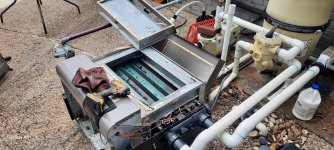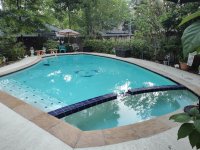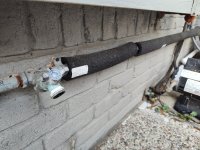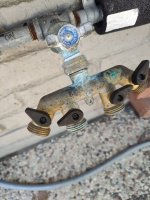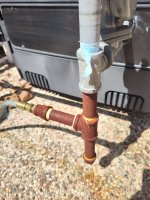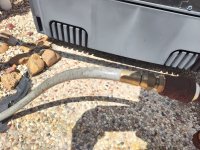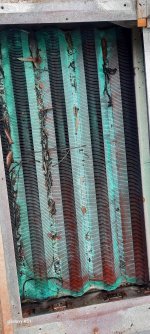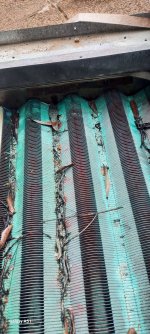Presumably home warranty diagnosis is blaming salt system; you will notice the green tent on the heat ex-changer. That's a sure sign of chemical damage. . Warranty is denying replacement due to non-coverage attributed to secondary damage.
The pool heater is Hayward pool heater is 4 years old. Pool chemistry has been maintained appropriately. Maintenance records are available. See photo of my beautiful pool. I live in the Houston area; extreme weather, high humidity and very hot summer months. In my opinion this is just due to the weather and normal wear and tear. Finding outdoor, green mildew, mold and corrosion is usual (see for example photo of outdoor spigots). The presence of oxygen from air in combination with moisture is the culprit of corrosion, any metallic surface is prone to corrode, copper, chromium, any other alloys, etc. I would not jump into the conclusion that salt cause this type of damage.
Appreciate any thoughts regarding this matter? Normal wear and tear and weather condition vs. salt damaging the heater
The pool heater is Hayward pool heater is 4 years old. Pool chemistry has been maintained appropriately. Maintenance records are available. See photo of my beautiful pool. I live in the Houston area; extreme weather, high humidity and very hot summer months. In my opinion this is just due to the weather and normal wear and tear. Finding outdoor, green mildew, mold and corrosion is usual (see for example photo of outdoor spigots). The presence of oxygen from air in combination with moisture is the culprit of corrosion, any metallic surface is prone to corrode, copper, chromium, any other alloys, etc. I would not jump into the conclusion that salt cause this type of damage.
Appreciate any thoughts regarding this matter? Normal wear and tear and weather condition vs. salt damaging the heater


